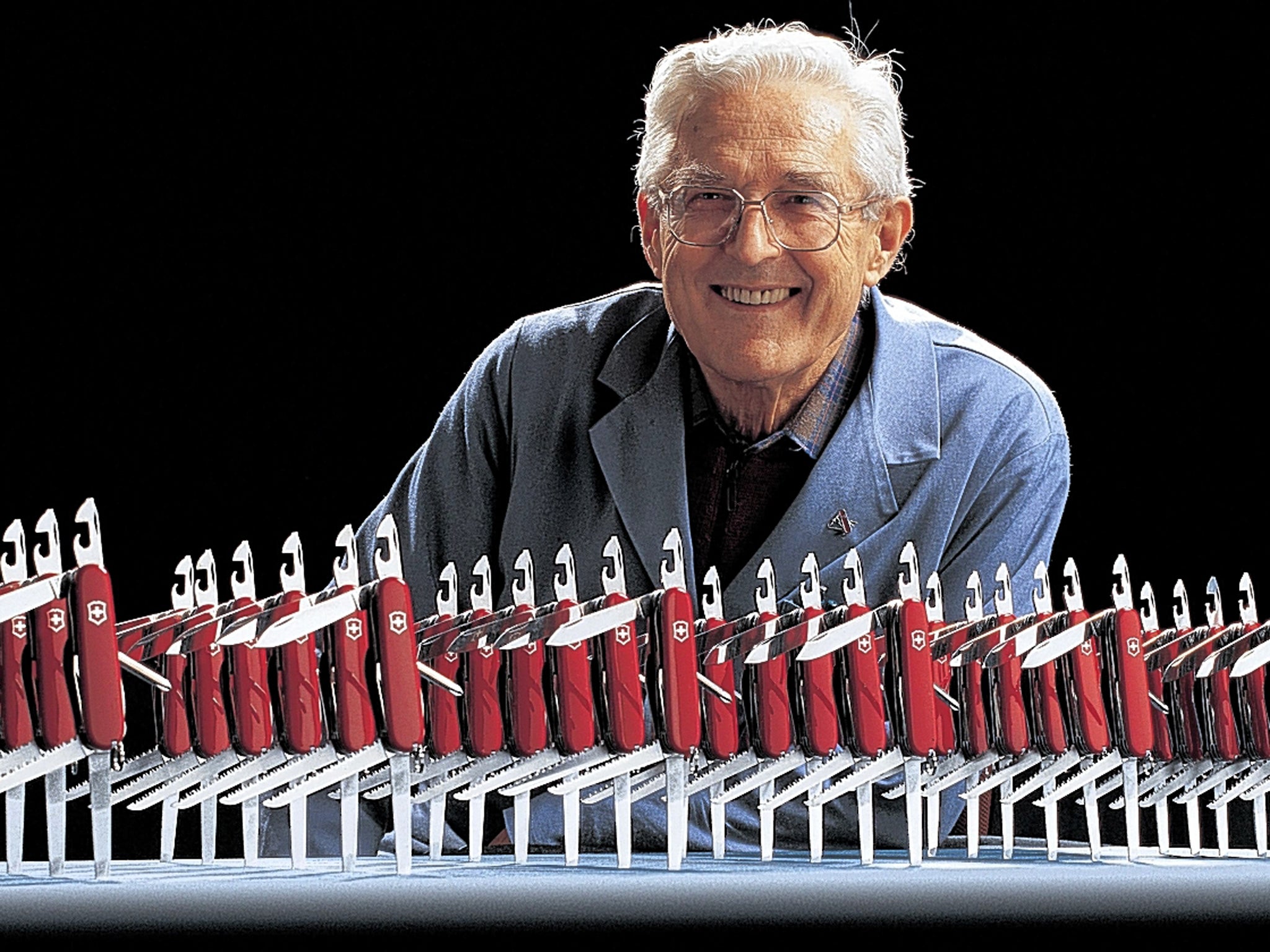Carl Elsener: Businessman who transformed the Swiss Army Knife into a global product

Starting as a teenage apprentice cutler, Carl Elsener went on to turn a relatively simple penknife into the global phenomenon that is the multi-functional Swiss Army Knife. He worked for the Swiss family firm Victorinox for 70 years, 57 of them as CEO, and retained the honorary, almost spiritual title "Senior Leader" until his death at the age of 90.
The famous red-handled knife with the Swiss white cross has gone from containing a single blade in the late 19th Century to incorporating anything from a spoon, fork, compass, screwdriver, mini-screwdriver for spectacles, can opener, wood and metal saw, toothpick, tweezers, scissors, pliers, key ring, fish-scaler or magnifying glass. Moving with the times, some latest models come with an LED light, laser pointer, USB memory stick, digital clock, Bluetooth or even MP3 player.
Elsener, formally known as Carl Elsener III, also presided over Victorinox's 21st century expansion into other products, including watches, clothing, luggage, rucksacks and fragrances. The "war on terror" after 9/11 had seen sales of the Swiss Army Knife plummet by up to 50 per cent after they were prohibited from airline hand baggage but the new product range helped keep the family firm, based in Ibach, Switzerland, afloat without laying off its loyal staff of 2,000. As chief executive from 1950 until 2007, when he handed over to his son Carl Elsener IV, Elsener saw his knife bring a little piece of Switzerland to more than 135 countries.
Now, 60,000 knives are produced daily providing current annual revenues of more than $500m and making Victorinox the largest cutlery manufacturer in Europe. Mountaineers have carried the knife to the summit of Everest, where it has probably saved many a life; Nasa provides them to its astronauts; Fidel Castro used one to snip his Havanas before he was forced to give up smoking; former US president George Bush Sr liked to show off the knife presented to him personally by Elsener during a visit to Lugano, Switzerland; and the New York Museum of Modern Art (MoMa) has one on show, on the basis that its design has transcended its purpose to become a work of art.
Visitors to the Victorinox headquarters in Ibach, in the canton of Schwyz, the cradle of the 13th century Swiss Confederation which continues today, were often greeted by a kindly, elderly man in blue workers' overalls who showed them around. Only later did they learn that he was the CEO and grandson of the founder.
Carl Elsener III was born in Ibach in 1922. His grandfather, widely known as Charles, had opened a cutlery business in Ibach in 1884, partly to create employment at a time when many young Swiss were emigrating to the New World. In 1891 the company won its first contract with the Swiss army, which had previously bought German-made knives. After the founder's mother died in 1909, he chose her name, Victoria, as his trademark; in 1921 it became Victorinox to reflect the use of stainless steel in the product.
Grandson Carl III joined the company as an apprentice cutler in 1937 straight out of school, taking over as chief executive from his own father in 1950 when the knives were still made by hand. After introducing machine production, he quickly recognised the popularity of his Offiziersmesser [Officer's Knife] among US army, navy and air force personnel based in post-war Europe. It was the Americans who, unable or unwilling to get their tongues round Offiziersmesser, first called it the Swiss Army Knife.
Apart from the Swiss military, PX stores on US bases became the major purchasers of knives made by Victorinox and a rival Swiss company, Wenger SA, based in Delémont in the Jura region near the French border. Both companies were allowed to use the Swiss national emblem – a white cross on a red background – with Victorinox putting its emblem inside a shield while Wenger borders its cross with a slightly-rounded square. The Swiss government and army agreed to a compromise under which Victorinox uses the logo "The Original Swiss Army Knife" while Wenger's product is promoted as "The Genuine Swiss Army Knife." Carl Elsener III oversaw the takeover of Wenger by Victorinox in 2005, although the Wenger name remains as a brand and entered the Guinness Book of Records in 2008 with its "Giant" or XXL model, featuring 87 tools and 141 functions.
"He was a tireless man who could work at the office until two in the morning," a Victorinox spokesman said. "When he woke up in the middle of the night with an idea, he wrote it down on the wallpaper in his room so as not to forget it. Despite his success, his motto, in his native Schwyzerdütsch [Swiss-German], remained: "Gueti sache chone immer no bässer wärde" – "Good things can always be made better". Elsener's wife Rosmarie predeceased him. He is survived by their 11 children, including Carl Elsener IV, who now runs Victorinox.
Carl Elsener III, cutler, toolmaker and business executive; born Ibach, Switzerland 6 July 1922; married Rosmarie (deceased; 11 children); died Schwyz, Switzerland 1 June 2013.
Subscribe to Independent Premium to bookmark this article
Want to bookmark your favourite articles and stories to read or reference later? Start your Independent Premium subscription today.

Join our commenting forum
Join thought-provoking conversations, follow other Independent readers and see their replies